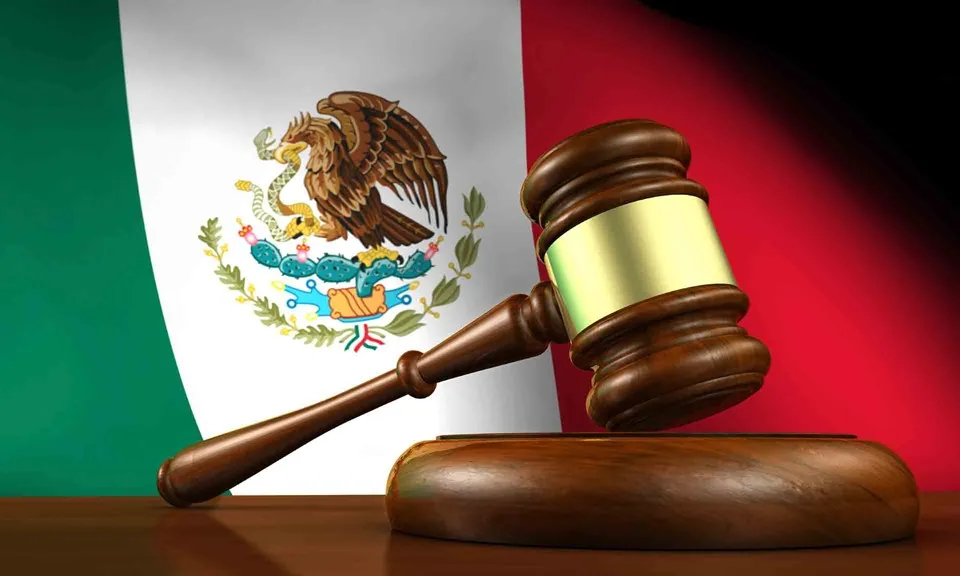- Posted on
- • Legal Opinions
The Current State of the Legal System in Mexico
- Author
-
-

- User
- Ximena Soriano
- Posts by this author
- Posts by this author
-

The Current State of the Legal System in Mexico
Mexico’s legal system is a complex blend of civil law traditions, constitutional frameworks, and ongoing reforms aimed at addressing modern challenges. As of 2025, the country continues to navigate significant transformations in its judiciary, criminal justice system, and efforts to combat corruption, while facing persistent issues like impunity, judicial independence, and public trust. This article explores the current state of Mexico’s legal system, highlighting key developments, challenges, and areas of progress.
A Civil Law Foundation with Constitutional Oversight
Mexico operates under a civil law system rooted in the Napoleonic Code, with its legal framework primarily derived from the 1917 Constitution. This document establishes the separation of powers among the executive, legislative, and judicial branches and guarantees fundamental rights. The Supreme Court of Justice of the Nation (SCJN) serves as the highest judicial authority, interpreting constitutional matters and resolving disputes between federal and state jurisdictions.
In recent years, the judiciary has gained prominence through landmark rulings on issues like human rights, indigenous rights, and electoral laws. However, the SCJN often faces criticism for perceived political influences, raising questions about its autonomy in a polarized political climate.
Judicial Reforms: Progress and Controversy
One of the most significant changes to Mexico’s legal system in recent decades has been the transition to an adversarial criminal justice system. Implemented nationwide by 2016, this reform replaced the inquisitorial model with oral trials, public hearings, and stronger protections for defendants’ rights. The goal was to increase transparency, reduce case backlogs, and align with international standards.
While the adversarial system has led to improvements—such as faster trial processes and better-trained legal professionals—challenges remain. Many states struggle with inadequate funding, insufficient training for judges and lawyers, and uneven implementation. Moreover, public perception of the system is mixed, as high-profile cases often expose inefficiencies or leniency toward powerful actors.
In 2024, Mexico introduced controversial judicial reforms, including the popular election of judges at various levels, including the Supreme Court. Proponents argue this enhances democratic accountability, but critics warn it risks politicizing the judiciary and undermining its independence. The long-term impact of these changes is still unfolding, with debates intensifying over their effect on investor confidence and the rule of law.
Challenges: Impunity, Corruption, and Public Trust
Despite reforms, Mexico’s legal system grapples with systemic issues. Impunity remains a critical problem, with estimates suggesting over 90% of crimes go unpunished. This is driven by factors like corruption, limited institutional capacity, and the influence of organized crime. High-profile cases, such as disappearances or femicides, often highlight delays in investigations and a lack of accountability. Corruption continues to erode public trust in the judiciary and law enforcement. While anti-corruption initiatives, such as the National Anti-Corruption System (SNA), have been established, their effectiveness is hampered by political resistance and inconsistent enforcement. Public opinion polls in 2025 indicate low confidence in the legal system, with many Mexicans viewing it as inaccessible or biased toward the elite.
Bright Spots: Human Rights and Access to Justice
Amid these challenges, there are notable areas of progress. Mexico has made strides in advancing human rights within its legal framework. The SCJN has issued rulings protecting same-sex marriage, indigenous land rights, and freedom of expression. International treaties, which hold constitutional rank in Mexico, have bolstered protections for vulnerable groups.
Efforts to improve access to justice are also underway. Legal aid programs and community-based initiatives aim to support marginalized populations, particularly in rural and indigenous areas. Additionally, technology is playing a role, with some courts adopting digital platforms to streamline processes and increase transparency.
Looking Ahead
Mexico’s legal system stands at a crossroads in 2025. Recent reforms offer opportunities to strengthen democratic participation and accountability, but they also risk exacerbating politicization and instability. Addressing impunity, corruption, and public distrust will require sustained investment in judicial training, institutional independence, and anti-corruption measures.
For Mexico to build a legal system that inspires confidence and delivers justice equitably, it must balance innovation with the preservation of judicial integrity. As the country continues to evolve, the world watches to see how these efforts will shape its democratic future.